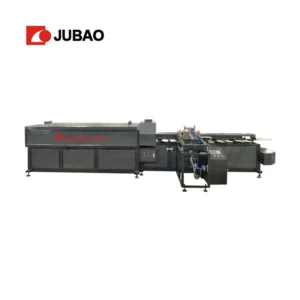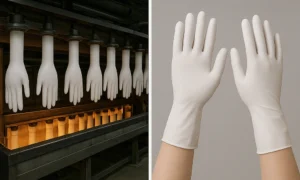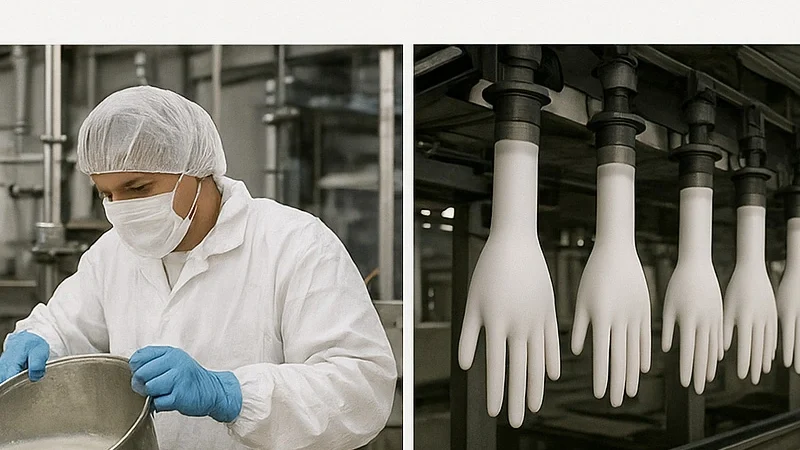What is the Process of Making PVC Gloves?
Table of Contents
Introduction to PVC Glove Manufacturing
PVC (Polyvinyl Chloride) gloves are essential protective equipment widely used in healthcare, food service, cleaning, and various industrial applications. The manufacturing process of PVC gloves involves sophisticated machinery and precise chemical formulations to produce high-quality disposable gloves that meet international safety standards.
Understanding the complete manufacturing process is crucial for businesses looking to enter the glove production industry or improve their existing operations. This comprehensive guide will walk you through every step of PVC glove production, from raw material preparation to final packaging.
Raw Materials and Preparation
PVC Compound Selection
The foundation of quality PVC gloves lies in the selection of appropriate raw materials. The primary component is PVC resin, which must meet specific grade requirements for medical or industrial applications. The PVC compound typically consists of suspension-grade PVC resin with a K-value between 65-70, ensuring optimal processing characteristics and final product properties.
Manufacturers must carefully source PVC resin from certified suppliers to guarantee consistency in molecular weight, particle size distribution, and purity levels. The quality of the base resin directly impacts the mechanical properties, flexibility, and durability of the finished gloves.
Additives and Plasticizers
To achieve the desired flexibility and performance characteristics, various additives are incorporated into the PVC formulation. Plasticizers, typically dioctyl phthalate (DOP) or diisononyl phthalate (DINP), are added to improve flexibility and reduce brittleness. Stabilizers such as calcium-zinc or organotin compounds prevent degradation during processing and extend shelf life.
Additional additives may include processing aids, colorants, and surface treatment agents. The precise formulation varies depending on the intended application and performance requirements of the final product.
PVC Glove Machine and Equipment
Types of PVC Glove Machines
The pvc glove machine is the heart of the manufacturing operation, and selecting the right equipment is critical for production efficiency and product quality. Modern PVC glove manufacturing typically employs dipping machines that can be categorized into straight-line and rotary configurations.
Straight-line pvc glove machine systems feature hand-shaped aluminum molds mounted on a continuous chain conveyor. These machines offer excellent accessibility for maintenance and quality control but typically have lower production rates compared to rotary systems. Rotary machines, on the other hand, mount the molds on a large rotating wheel, allowing for higher throughput and more compact footprint.
Advanced pvc glove machine models incorporate automated features such as programmable temperature control, automatic dipping depth adjustment, and integrated quality monitoring systems. These features ensure consistent product quality while minimizing manual intervention and reducing labor costs.
Complete Production Line Setup
A complete PVC glove production line extends beyond the primary pvc glove machine to include supporting equipment for material preparation, post-processing, and quality control. The compound mixing system typically consists of high-speed mixers, storage tanks, and pumping systems to deliver the PVC compound to the dipping station.
Downstream equipment includes curing ovens with precise temperature control, cooling tunnels, automated stripping systems, and powder application units for easy donning. Modern production lines also incorporate automated inspection systems using vision technology to detect defects and ensure consistent quality.

Step-by-Step Production Process
Mold Preparation and Heating
The production process begins with thorough cleaning and preparation of aluminum hand molds. These molds are precision-manufactured to replicate the exact dimensions and surface texture required for the gloves. The molds undergo a multi-stage cleaning process using specialized detergents and sanitizing agents to remove any residual compounds or contaminants.
After cleaning, the molds are preheated in an oven to temperatures ranging from 60-80°C. This preheating step is crucial as it prepares the mold surface for optimal compound adhesion and helps control the thickness of the final product. The temperature must be carefully controlled as it directly affects the gel formation and curing characteristics of the PVC compound.
Dipping Process
The core manufacturing step occurs when the preheated molds are immersed into the PVC compound tank. The pvc glove machine controls the dipping speed, depth, and dwell time to ensure uniform coating thickness. Typical dipping speeds range from 10-30 mm/minute, with slower speeds generally producing thicker gloves.
During the dipping process, the PVC compound adheres to the heated mold surface, forming a gel layer that will become the glove material. The compound formulation and temperature must be carefully maintained to achieve consistent viscosity and ensure proper gel formation. Multiple dipping cycles may be employed to achieve desired thickness specifications.
Curing and Cooling
Following the dipping process, the coated molds enter a curing oven where temperatures reach 150-200°C. This high-temperature treatment causes the PVC compound to undergo gelation and fusion, creating the final polymer structure. The curing time typically ranges from 3-8 minutes, depending on the compound formulation and desired properties.
After curing, the gloves undergo a controlled cooling process to room temperature. This cooling phase is critical for dimensional stability and prevents thermal shock that could cause defects or dimensional changes. Some production lines incorporate gradual cooling zones to optimize this process.
Stripping and Finishing
Once cooled, the formed gloves are mechanically stripped from the molds using automated stripping equipment integrated with the pvc glove machine. The stripping process requires careful control to prevent tearing or damage to the gloves while ensuring complete removal from the mold surface.
Post-stripping operations may include edge trimming, surface treatment, and powder application. Cornstarch or other approved powders are commonly applied to the inner surface to facilitate easy donning and prevent the gloves from sticking together during packaging.
Quality Control and Testing
Quality control is integrated throughout the manufacturing process, beginning with incoming raw material inspection and continuing through final product testing. Critical quality parameters include tensile strength, elongation at break, puncture resistance, and dimensional accuracy.
Automated inspection systems examine each glove for defects such as holes, thin spots, or surface irregularities. Statistical sampling protocols ensure that production batches meet specification requirements. Additional testing may include biocompatibility assessments for medical-grade gloves and chemical resistance testing for specialized applications.

Packaging and Distribution
The final manufacturing step involves automated counting, packaging, and sealing of the gloves. Modern packaging equipment can handle various package sizes and configurations, from small retail boxes to large institutional dispensers. Packaging materials must provide adequate protection against contamination, moisture, and physical damage during storage and transportation.
Proper labeling includes product specifications, regulatory compliance information, and traceability codes. Advanced production facilities implement lot tracking systems that enable complete traceability from raw materials through final distribution.
Conclusion
The manufacturing of PVC gloves is a sophisticated process that requires precise control of materials, equipment, and processing parameters. Modern pvc glove machine technology has significantly improved production efficiency while maintaining the high quality standards required for medical and industrial applications.
Success in PVC glove manufacturing depends on careful attention to raw material quality, proper equipment selection and maintenance, and rigorous quality control throughout the production process. As demand for protective equipment continues to grow, manufacturers who invest in advanced pvc glove machine technology and optimize their processes will be best positioned for long-term success in this important industry.
Understanding these manufacturing fundamentals enables businesses to make informed decisions about equipment investments, process optimization, and quality improvement initiatives in the competitive PVC glove market.
